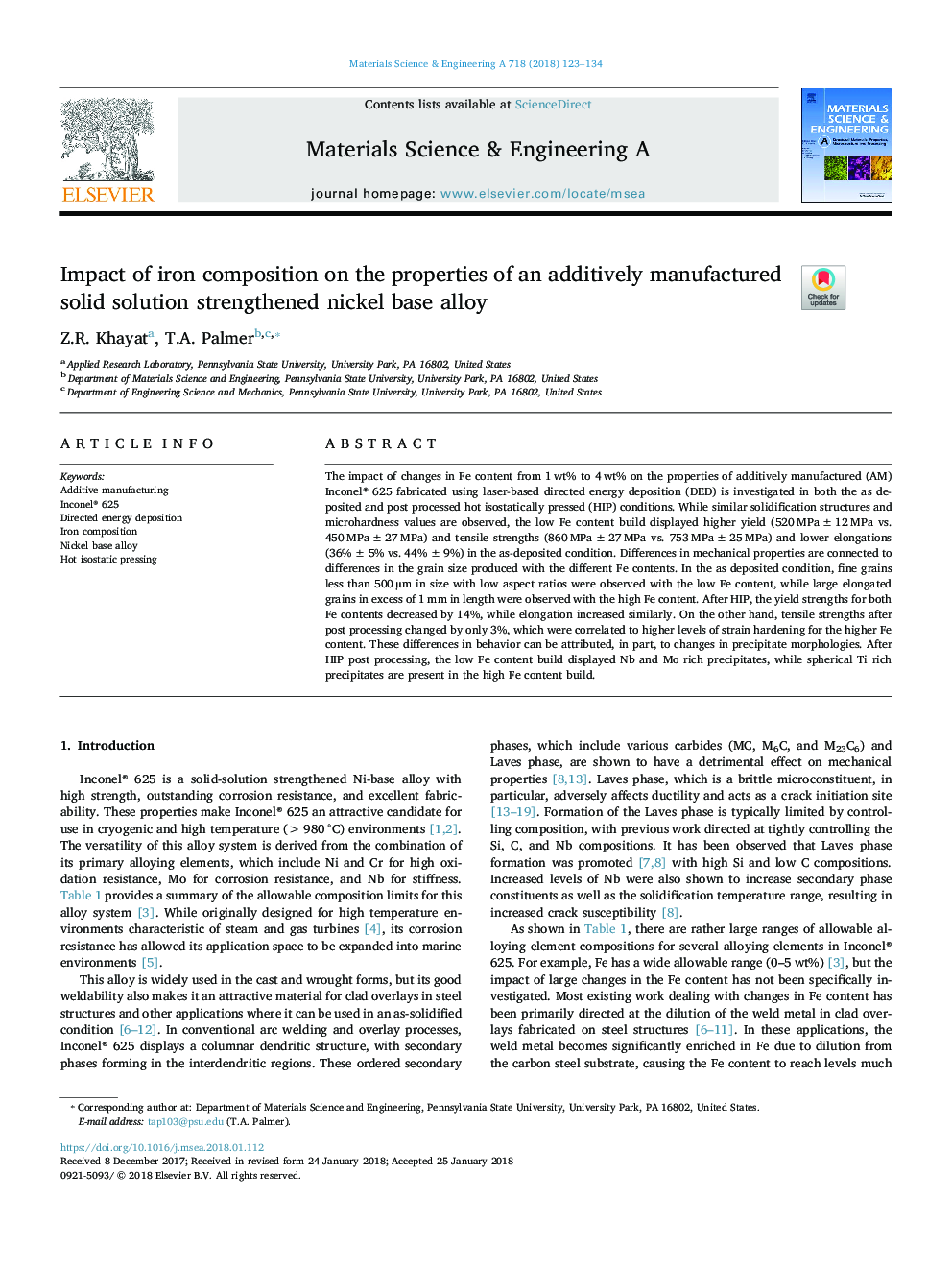| Article ID | Journal | Published Year | Pages | File Type |
|---|---|---|---|---|
| 7973196 | Materials Science and Engineering: A | 2018 | 12 Pages |
Abstract
The impact of changes in Fe content from 1â¯wt% to 4â¯wt% on the properties of additively manufactured (AM) Inconel® 625 fabricated using laser-based directed energy deposition (DED) is investigated in both the as deposited and post processed hot isostatically pressed (HIP) conditions. While similar solidification structures and microhardness values are observed, the low Fe content build displayed higher yield (520â¯MPa ± 12â¯MPa vs. 450â¯MPa ± 27â¯MPa) and tensile strengths (860â¯MPa ± 27â¯MPa vs. 753â¯MPa ± 25â¯MPa) and lower elongations (36% ± 5% vs. 44% ± 9%) in the as-deposited condition. Differences in mechanical properties are connected to differences in the grain size produced with the different Fe contents. In the as deposited condition, fine grains less than 500â¯Âµm in size with low aspect ratios were observed with the low Fe content, while large elongated grains in excess of 1â¯mm in length were observed with the high Fe content. After HIP, the yield strengths for both Fe contents decreased by 14%, while elongation increased similarly. On the other hand, tensile strengths after post processing changed by only 3%, which were correlated to higher levels of strain hardening for the higher Fe content. These differences in behavior can be attributed, in part, to changes in precipitate morphologies. After HIP post processing, the low Fe content build displayed Nb and Mo rich precipitates, while spherical Ti rich precipitates are present in the high Fe content build.
Related Topics
Physical Sciences and Engineering
Materials Science
Materials Science (General)
Authors
Z.R. Khayat, T.A. Palmer,
